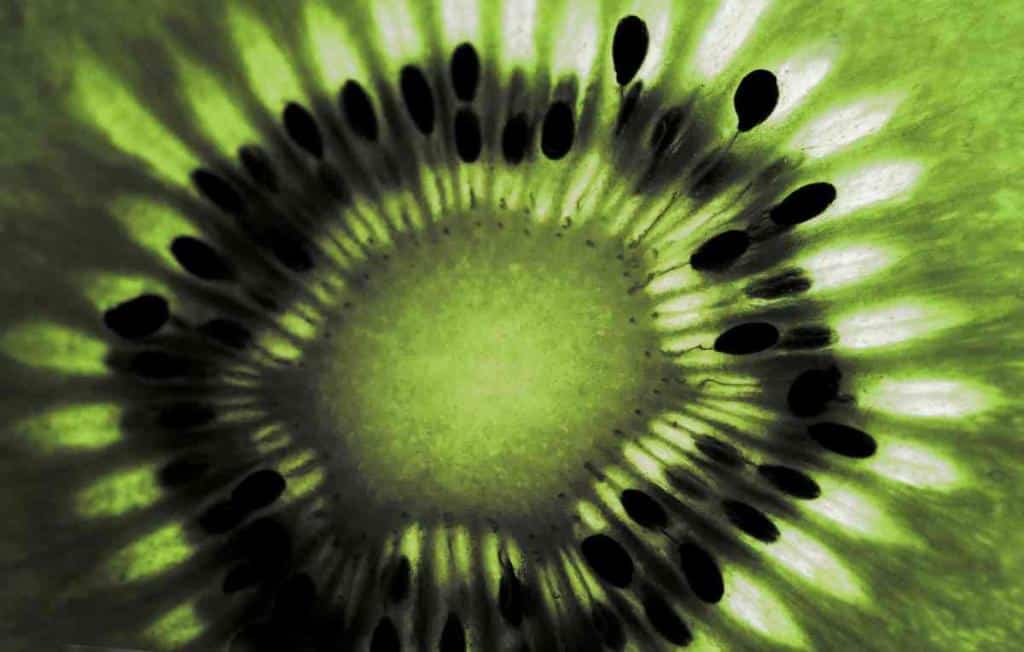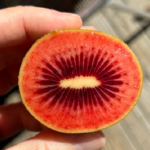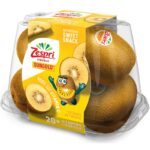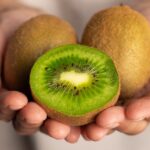A guide to growing kiwifruit from seed

The content of this article was prepared by Nature and Garden and has been revised and republished by FreshFruitPortal.com.
Who hasn’t wondered whether those thousands of tiny black pips could ever amount to anything? We all have! And the good news is: yes! You can definitely grow a whole kiwi plant from seed. Here are 5 steps to start growing kiwi with seeds:
1/ Prepare the kiwi seeds
- Scoop seeds out of the fruit with a spoon.
- There’s always a little flesh with them, it’s ok.
- You can shred the flesh a bit with a fork to make the next step easier.
There’s no need to try to remove the flesh unless you want to keep the seeds to sow them at a later date.
2/ Sow the kiwi seeds in a tray
- Prepare your soil mix: sift it to remove or break clumps into fine bits. If you can, grate a piece of wood charcoal into the mix as well. This prevents damping off.
- In a tray or wide container, pour this soil mix on top of a bed of clay pebbles. You can also make holes at the bottom of the tray. What’s important is that it drains well so that the soil won’t stay soggy if you overwater.
- Spread the seeds out with the flesh together on top of the soil mix. If you’ve removed the flesh, sprinkle them around. If not, spread the blotches as best you can.
- Mist the seeds and soil mix with a small hand spray. With your finger, check that it’s moist all the way down.
Don’t let it get too soggy. A good way to do that is to squirt the mister several times, then wait for a few minutes. Repeat until moisture has seeped to the bottom. After that, check on your future seedlings morning and evening, and mist again if needed.
3/ Transplant the most vigorous ones to nursery pots
Seedlings will sprout in great numbers!
- Let them fight each other off at the very beginning.
- Within a week or so, some of them will start producing “real” leaves.
- When the seedlings get 4 real leaves, you can select the most vigorous ones and transplant them to individual nursery pots.
Try to get at least two dozen seedlings going. Some might die off, and in the end you want to have at least 15 or more survivors.
4/ When ready, plant in the open!
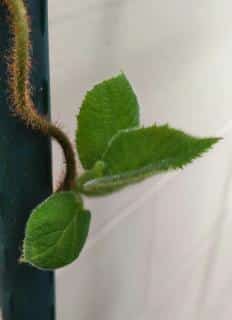 Most kiwi species need both a male and a female plant to bear fruit. They’re dioecious. At the beginning, it’s impossible to tell which is which: only the flowers are different.
Most kiwi species need both a male and a female plant to bear fruit. They’re dioecious. At the beginning, it’s impossible to tell which is which: only the flowers are different.
Let your seedlings grow to about a foot in height (25-30cm) in their nursery pots. Transplant to larger pots in the meantime, if you notice roots starting to stick out from below.
When they’re nearing a foot tall (30 cm), with 8 or so good pairs of leaves, you can transplant them to the ground.
- Best is to do this in fall, and to protect them against the cold by winterizing them with mulch and the like.
- It’s also possible to transfer them in spring, but you’ll have to water diligently during that whole first summer.
- Set the seedlings up at their final growing spot, along a strong lattice or at the posts of a pergola.
- We recommend planting them two by two, or even three by three.
5/ Select the final productive kiwis
Why plant several of them together? For pollination: since you’re not sure which stems will turn out to be females, you need to increase the chances of having one female plant for each post. When they’re young, the saplings won’t yet compete very much so it’s possible to plant several near one another.
Each seedling has a 50% chance of being female. With 2 per pole, there’s a 50% chance of getting a female stem. With 3 per pole, it becomes 66% chance, and if you plant one on each face (4 plants) you can reach a 75% chance.
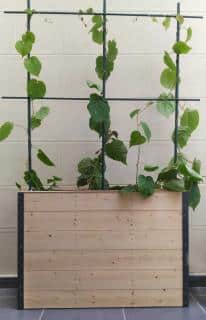 After about 4-6 years, your kiwi plants will bear their first flowers. At that stage, you can identify which stems are male, and which stems are female.
After about 4-6 years, your kiwi plants will bear their first flowers. At that stage, you can identify which stems are male, and which stems are female.
- Mark the most vigorous female stem on each post.
- Keep and mark one vigorous male for every 5-8 females. For added security, keep 2 males at least so that if one dies, you have a back-up.
- After double and triple-checking, you can chop any unwanted plants off from each pole or post. As they grow large, it’s best to give each one space.
Kiwi sprouts by Rosalyn & Gaspard Lorthiois, own work
Seeds in a slice by Canned Muffins under © CC BY 2.0
Kiwi sapling by Rosalyn & Gaspard Lorthiois, own work
Transplanted from seed by Rosalyn & Gaspard Lorthiois, own work













